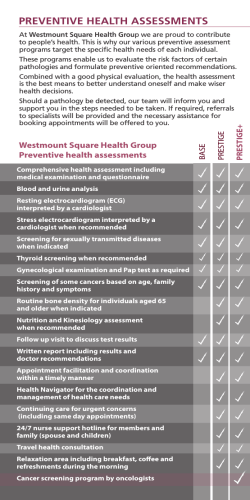
Full Text - International Journal of School Health
Int J School Health. 2015 April; 2(2): e25268. Research Article Published online 2015 April 1. Comparison of Knowledge, Attitude and Practice About Colorectal Cancer Screening Between University Faculty Members and High School Teachers in Shiraz, Iran 1 2 Sulmaz Ghahramani ; Pegah Jahani ; Gholamreza Abdollahifard 3,* 1Health Policy Research Center, Shiraz University of Medical Sciences, Shiraz, IR Iran 2Student Research Committee, Shiraz University of Medical Sciences, Shiraz, IR Iran 3Department of Community Medicine, Shiraz University of Medical Sciences, Shiraz, IR Iran *Corresponding author: Gholamreza Abdollahifard, Department of Community Medicine, Shiraz University of Medical Sciences, Shiraz, IR Iran. Tel: +98-7132354431, Fax: +98-7132359847, E-mail: [email protected] Received: November 10, 2014; Accepted: February 10, 2015 Background: Teachers and university faculty members can play key role in raising the awareness and knowledge of the populations and potentially change their attitude and behavior regarding CRC. Thus considering the important role played by this group and regarding the increasing rate of CRC, the present study attempted to evaluate the basic knowledge of high-school teachers and university faculty members and their attitude and practice in connection with CRC screening test. Objectives: The aim of this study was to compare the knowledge, attitude and practice about Colorectal Cancer Screening between University Faculty members and High School teachers in Shiraz, Iran Materials and Methods: This cross-sectional study comprised 832 subjects with high education level. Use of a sample size formula indicated the need for at least 770 participants; a population goal was set at 831 individuals. The study involved 424 males (212 high school teachers and 212 faculty members) and 417 females (206 high school teachers and 211 faculty members). Stratified random sampling method was carried out proportionally to population size in each group. Questionnaires were completed via face to face interview. Data were analyzed using SPSS.V.13. Results: Mean scores for knowledge of male faculty members (3.47 ± 1.39) and female teachers (4.09 ± 1.51) were greater than female faculty members (2.36 ± 1.28) and male teachers (2.65 ± 1.96). Male faculty members had higher mean scores for attitude (3.00 ± 1.61) than that of female teachers (3.00 ± 2.09). A significant difference was observed in mean knowledge scores (P = 0.001) of female teachers with different academic degrees, but not in regard to attitude (P = 0.89). Conclusions: This study showed no acceptable level of knowledge, attitude and practice about screening of colon cancer among faculty members and teachers from different areas of Shiraz. This calls for further attention paid by health professionals and other authorities concerned with regard to providing the population under study with necessary information about colon cancer screening. Keywords: Knowledge; Attitude; Colorectal Neoplasms; Early Detection of Cancer 1. Background Colorectal cancer (CRC) is the second highest cause of cancer-related death (1). Mortality of CRC has been rising during recent decades (2). The incidence of CRC has increased in Iran during the last 25 years (3). Besides the health, disability and life insurance cost for employees affected by colorectal cancer, lost productivity associated with morbidity and premature mortality contributes to significant additional costs (4). Annual expenditure for colorectal cancer was conservatively estimated to equal $5.3 billion in 2000 (5). Mortality associated with colorectal cancer is likely to increase by earlier detection and allow removal of precursor colorectal adenomas through an effective population-based screening program (6). Colonoscopy, Fecal Occult Blood Test (FOBT) and sigmoidoscopy are tools used as screening test (7). Screening is not only an efficient measure to reduce colorectal cancer mortality but also has been predicted to be associated with acceptable costs and expenditure (8). In a study in Selangor, Malaysia, teachers had a low knowledge about breast cancer, while 99% of nurses in Lagos, Nigeria, were aware of cervical cancer screening where electronic media and health professionals played an important role (7). Another study in Nigeria, found that cervical smear uptake is low among low educated people and teachers. They also showed that the screening test was affordable and health education was an important factor in causing a reduction in cervical cancer (8). Unfortunately, according to the World Health Organization (WHO) guidelines for cancer screening and prevention, few national programs are active in Iran (9). Available data in Iran suggest a younger age distribution for CRC compared to Western reports; e.g. more than half of participants in Copyright © 2015, Health Policy Research Center. This is an open-access article distributed under the terms of the Creative Commons Attribution-NonCommercial 4.0 International License (http://creativecommons.org/licenses/by-nc/4.0/) which permits copy and redistribute the material just in noncommercial usages, provided the original work is properly cited. Ghahramani S et al. a study aged less than 50 years (3).Teachers and university faculty members can play key role in raising the awareness and knowledge of the populations and potentially change their attitude and behavior regarding CRC. 2. Objectives Thus considering the important role played by this group and regarding the increasing rate of CRC, the present study attempted to evaluate the basic knowledge of high-school teachers and university faculty members and their attitude and practice in connection with CRC screening test. 3. Materials and Methods This survey was conducted on the group of community with high education level, designed as a cross-sectional study of the academic staff of Shiraz University and Shiraz University of Medical Sciences and teachers of high schools in four education and training districts of Shiraz, Iran, in 2012. Participants in the study were at least 40 years-old who gave their consent to take part in the study. People with chronic diseases or any form of malignancies were excluded from the study. Use of a sample size formula indicated the need for at least 770 participants; a population goal was set at 831 individuals. The study involved 424 males (212 from high school teachers and 212 faculty members) and 417 females (206 from high school teachers and 211 faculty members). Stratified random sampling method was used proportionate to the size of main population of each group. P = 50% and α = 0.05 were used for estimation of sample size. All academic staff were divided into two chief groups including faculty members from Shiraz University and Shiraz University of Medical Sciences, then each university was assigned to different schools and sampling was based on the number of faculty members in each school. The study was conducted on 4 education and training districts, each involving four subjects including mathematics, experimental sciences, social sciences and technical disciplines. Valid and reliable questionnaires were completed via face to face interview. Internal consistency and reliability were assessed by applying a Cronbach’s alpha test (at a minimal α = 0.72). The questionnaire included three parts, and contained 18 questions for women and 24 questions for men. The total score for women was 18 and for men 24. Using the questionnaire, we evaluated the attitude, knowledge and practice of the participants. 4. Results For evaluating attitude, we determined their opinion about screening. Also, we determined their age at the first screening test as a factor which demonstrated their knowledge. For evaluating their practice, we asked them if they had done any screening tests during their lifetime. SPSS software, Kruskal-Wallis, Chi square, Fisher exact, and Mann-Whitney tests were used for data analysis. Considering the scores obtained, the participants were divided into 2 three groups. In regard to knowledge about screening, those who achieved more than 65% of the total score were designated as sufficient, 35% to 64.9% graded tolerable and less than 35% considered as poor. As for attitude about screening, those who achieved more than 65% of the total score were designated as sufficient, 35% to 64.9% regarded as tolerable and less than 35% categorized as poor. Among the 831 studied participants, 414 (49.8%) were males, including 212 faculty members (141 from Shiraz University of Medical Sciences, 71 from Shiraz University (non-medical), and 202 high school teachers. There were 417 (50.2%) females, who included 211 faculty members (129 medical sciences, 82 Shiraz University (non- medical)) and 206 high school teachers. Demographic characteristics of the faculty members and teachers are shown in the Tables 1 and 2. Table 1. Demographic Characteristics of the Faculty Members a Characteristics Values Type of University Shiraz University of Medical Sciences, n = 223 Female 82 (36.7) Male 141(63.3) Shiraz University, n = 200 Female 129 (64.5) Male 71 (35.5) Mentor 98 (25) Assistant 98 (25) Associate 98 (25) Professor 98 (25) Academic rank, n = 392 Field, n = 450 Social sciences 130 (28.8) Engineering 50 (11.1) Health science 32 (7.1) Basic medicine 87 (19.3) Clinical medicine 151 (33.5) Table 2. Demographic Characteristics of the Participating Teachers a Characteristics Values Gender, n = 408 Women 202 (49.5) Men 206 (50.5) Bachelor 375 (91.69) Masters 34 (8.31) Education degree, n = 409 Subject, n = 408 Social sciences 188 (46.07) Science 129 (31.61) Mathematics 58 (14.21) Technical sciences 33 (8.08) a Data are presented as No. (%). Int J School Health. 2015;2(2):e25268 Ghahramani S et al. Mean scores of knowledge for male faculty members (3.47 ± 1.39) and female teachers (4.09 ± 1.51) were greater than female faculty members (2.36 ± 1.28) and male teachers (2.65 ± 1.96). Similarly, male faculty members had higher mean scores for attitude (3.00 ± 1.61), while regarding attitude, female teachers had lower mean scores than male teachers (3.00 ± 2.09). Difference of mean scores for knowledge (P = 0.80) and attitude (P = 0.71) about CRC screening in male teachers of different educational degree was not statistically significant, but in regard to mean scores for knowledge (P = 0.001) and attitude (P = 0.05) in male teachers of different school districts the difference were significant. There was no statistically significant difference in mean difference of knowledge (P = 0.11) and attitude (P = 0.83) scores between male teachers with different subjects. Mean scores of knowledge and attitude of teachers and faculty members with different subjects is shown in Tables 3 and 4. Table 3. Mean Scores of Knowledge and Attitude Toward CRC Screening in Teachers of Both Genders With Different Fields of Study Subjects a Knowledge Field of study Male Female Attitude Male Female Social sciences 2.54 ± 1.91 4.13 ± 1.51 3.062.06 2.34 ± 2.12 Natural sciences 2.86 ± 1.90 4.12 ± 1.46 3.172.11 1.72 ± 2.01 Mathematics 3.20 ± 1.92 4.05 ± 1.55 2.85 ± 2.28 2.05 ± 2.16 Technical sciences 2.03 ± 1.99 2.66 ± 2.08 2.75 ± 2.01 2.00 ± 1.00 other Total P value 4.00 ± 1.41 3.00 ± 1.41 2.65 ± 1.96 4.09 ± 1.51 3.00 ± 2.09 2.61 ± 2.09 0.112 0.93 0.834 0.207 a Data are presented as mean ± SD. There was no significant difference in mean scores of knowledge (P = 0.29) and attitude (P = 0.33) between different age groups of male teachers. Mean scores of knowledge and attitude in different age groups of teachers and faculty members are shown in Tables 5 and 6. Among female teachers with different academic degrees, although there was a significant difference in knowledge mean scores (P = 0.001), mean scores of attitude (P = 0.89) were not statistically different. Mean scores of knowledge and attitude in different educational degrees among faculty members are shown in Table 7. Mean scores of knowledge (P = 0.93) or attitude (P = 0.20) of female teachers with different subjects did not differ significantly. Table 5. Mean Scores of Knowledge About CRC Screening in Different Age Groups of Male and Female Teachers and Faculty Members a Faculty members Female 40-44 1.05 ± 1.39 2.39 ± 1.30 2.68 ± 1.97 3.98 ± 1.53 45-49 3.46 ± 1.35 2.66 ± 1.35 2.47 ± 2.00 4.02 ± 1.64 3.21 ± 1.73 4.5 ± 1.02 Age, y Knowledge Field of study Social sciences Engineering Health science Male Female Attitude Male Female 2.72 ± 1.06 1.25 ± 0.90 3.03 ± 1.35 2.23 ± 0.80 3.3 ± 1.8 1.46 ± 1.04 3.60 ± 2.23 2.26 ± 0.78 3.27 ± 1.26 2.05 ± 1.15 3.44 ± 1.50 1.71 ± 0.91 Basic medicine 3.89 ± 1.17 2.96 ± 1.05 2.73 ± 1.34 2.53 ± 1.61 Clinical medicine 3.66 ± 1.04 3.12 ± 0.84 2.92 ± 1.40 2.10 ± 1.56 Total P value 2.36 ± 1.28 2.36 ± 1.28 3.00 ± 1.61 2.19 ± 1.29 0.001 0.001 a Data are presented as mean ± SD. Int J School Health. 2015;2(2):e25268 0.123 0.013 Male 50 50-54 3.65 ± 1.44 2.22 ± 1.18 55 3.82 ± 1.33 1.96 ± 1.18 Female a Data are presented as mean ± SD. Table 6. Mean Scores of Attitude Toward CRC Screening of Different Age Groups in Both Genders of Teachers and Faculty Members Faculty Members Teachers Male Female Male Female 40-44 2.58 ± 1.68 1.97 ± 1.30 2.98 ± 2.10 2.15 ± 2.09 45-49 3.06 ± 1.49 2.62 ± 1.35 2.88 ± 2.10 2.08 ± 2.07 - - 3.56 ± 2.08 2.38 ± 3.18 50-54 2.6 ± 1.62 2.00 ± 1.19 - - 55 3.76 ± 1.42 2.3 ± 1.12 - - Age, y 50 Table 4. Mean Scores of Knowledge and Attitude Toward CRC Screening in Male and Female Faculty Members With Different Field of Study a Teachers Male a Data are presented as mean ± SD. Table 7. Mean Scores of Knowledge and Attitude Towards CRC Screening in Faculty Member With Different Academic Ranks a Knowledge Academic Rank Male Female Attitude Male Mentor 3.75 ± 1.4 Assistant 4.3. ± 2.18 4.76 ± 1.20 3.14 ± 1.71 Female 3.38 ± 1.41 3.16 ± 1.58 2.96 ± 1.66 3.17 ± 1.23 Associate 3.55 ± 1.57 2.90 ± 1.03 2.36 ± 1.02 2.32 ± 1.59 Professor 3.80 ± 1.08 1.94 ± 1.15 3.40 ± 1.79 1.96 ± 0.91 Total P value 3.47 ± 1.39 2.36 ± 1.28 3.00 ± 1.61 2.19 ± 1.29 0.006 0.001 0.001 0.001 a Data are presented as mean ± SD. 3 Ghahramani S et al. Knowledge of female teachers regarding CRC screening was statistically different in various school districts (P = 0.001) but was not significantly different in regard to attitude between different school districts (P = 0.17). Mean scores of knowledge (P = 0.001) and attitude (P = 0.005) of faculty members of the two universities regarding CRC screening were significantly different. Mean scores of knowledge of male faculty members in Shiraz University of Medical Sciences was higher than male academic staff in Shiraz University. Among the 831 cases, only 86 had criteria for CRC screening, 26 cases (34.5%) indicated that they had undergone one of the screening methods for CRC. History of CRC screening was indicated by 66.7% of female and 14.3% of male teachers while 34% of male and 23.1% of female faculty members had undergone CRC screening. There was a significant difference between teachers and faculty members regarding CRC practice (P = 0.001). Fecal occult blood test condition was found in 22.3% of those who did have colon cancer screening. 5. Discussion To our best of knowledge, similar study has not been reported in our region. This is a cross sectional study based on self- report of participants, in addition to longitudinal survey with close observation on whether or not the participants had undergone CRC. In our study, we found that knowledge of colon cancer screening was different among teachers in different districts, which may be due to financial issues. Female teachers had the highest score for practice, which may be due to having more free time than faculty members. Some study demonstrated that male knowledge about colon cancer screening is lower than females, so female teachers underwent colonoscopy more than males. This result is in line with the results of previous study (10). Knowledge of male faculty members of Shiraz University of Medical Sciences was more than that of their counterparts at Shiraz University. This may be due to more medically oriented academics in Shiraz University of Medical Sciences. We found that knowledge of female teachers was significantly higher than female faculty members, which may due to teachers' having more spare time, that enables them to get information about colon cancer and screening program through electronic media (7, 11). In our study, knowledge and attitude of participants aged more than 55 years was highest among the different age groups, where the elderly had more information about cancer and screening, which was consistent with the results of study by Jerant et al. (12). Among different academic ranks, male faculty members had more knowledge and attitude about colon cancer screening than the females. The results of some other studies are in line with our results (13, 14). Female faculty members often spend their time on housekeeping, which may account for females' lesser awareness and attitude towards colon cancer screening. Among the 4 teachers, knowledge of the females was more than their male counterparts. This finding is controversial in different studies (10, 14-17). Our study has some limitations, where it evaluated the knowledge, attitude and practice of teachers and faculty members about colon cancer screening. The results obtained could not be generalized and applied to other groups of people in different locations. The design of our study was cross-sectional, which is another limitation. Gathering data by self-reporting may result in response bias. The prevalence of colon cancer in the area and socioeconomic status of participants may also affect the results. Physicians’ recommendations have an important role in practice and attitude of patients. Thus wherever physicians emphasize on doing colon cancer screening, the patients have better practice and attitude regarding colon cancer screening. This study demonstrated no acceptable knowledge, attitude and practice about colon cancer screening among faculty members and teachers of different age groups, genders, academic ranks and field of study, and underlined the greater importance of planning of colon cancer screening program. Electronic media can provide vital information about colon cancer screening and the importance of detecting the cancer at an early stage. More attention should be paid to providing the necessary knowledge about colon cancer screening through electronic media, health professionals and other sources. Decreasing the faculty members’ workload can help them spend their free time on health programs. Providing free or low cost screening programs can increase the population practice of colon cancer screening. Authors’ Contributions Study concept and design: Gholamreza Abdollahifard; Acquisition of data: Pegah Jahani, Sulmaz Ghahramani; Analysis and interpretation of data: Sulmaz Ghahramani; Drafting of the manuscript: Pegah Jahani, Sulmaz Ghahramani; Critical revision of the manuscript for important intellectual content: Gholamreza Abdollahifard; Statistical analysis: Sulmaz Ghahramani; Administrative, technical, and material support: Sulmaz Ghahramani; Study supervision: Gholamreza Abdollahifard. Funding/Support This work supported by vice chancellor of research of Shiraz University of Medical Sciences. References 1. 2. 3. 4. 5. Boyle P, Ferlay J. Cancer incidence and mortality in Europe, 2004. Ann Oncol. 2005;16(3):481–8. Pourhoseingholi MA. Increased burden of colorectal cancer in Asia. World J Gastrointest Oncol. 2012;4(4):68–70. Pourhoseingholi MA, Zali MR. Colorectal cancer screening: Time for action in Iran. World J Gastrointest Oncol. 2012;4(4):82–3. Sonnenberg A, Delco F, Inadomi JM. Cost-effectiveness of colonoscopy in screening for colorectal cancer. Ann Intern Med. 2000;133(8):573–84. Barouni M, Ghaderi H, Shahmoradi MK. The economic evalu- Int J School Health. 2015;2(2):e25268 Ghahramani S et al. 6. 7. 8. 9. 10. 11. ation of screening for colorectal cancer: Case of Iran. Clin Lab. 2013;59(5-6):667–74. Cappell MS. The pathophysiology, clinical presentation, and diagnosis of colon cancer and adenomatous polyps. Med Clin North Am. 2005;89(1):1–42. Awodele O, Adeyomoye AA, Awodele DF, Kwashi V, Awodele IO, Dolapo DC. A study on cervical cancer screening amongst nurses in Lagos University Teaching Hospital, Lagos, Nigeria. J Cancer Educ. 2011;26(3):497–504. Adekanle DA, Adeyemi AS, Afolabi AF. Knowledge, Attitude and Cervical Cancer Screening Among Female Secondary School Teachers in Osogbo, Southwest Nigeria. Academic J Cancer Res. 2011;4:24–8. Kolahdoozan S, Sadjadi A, Radmard AR, Khademi H. Five common cancers in Iran. Arch Iran Med. 2010;13(2):143–6. Ritvo P, Myers RE, Paszat L, Serenity M, Perez DF, Rabeneck L. Gender differences in attitudes impeding colorectal cancer screening. BMC Public Health. 2013;13:500. Dandash KF, Al-Mohaimeed A. Knowledge, attitudes, and practices surrounding breast cancer and screening in female teachers Int J School Health. 2015;2(2):e25268 12. 13. 14. 15. 16. 17. of buraidah, saudi arabia. Int J Health Sci (Qassim). 2007;1(1):61–71. Jerant AF, Franks P, Jackson JE, Doescher MP. Age-related disparities in cancer screening: analysis of 2001 Behavioral Risk Factor Surveillance System data. Ann Fam Med. 2004;2(5):481–7. Guessous I, Dash C, Lapin P, Doroshenk M, Smith RA, Klabunde CN, et al. Colorectal cancer screening barriers and facilitators in older persons. Prev Med. 2010;50(1-2):3–10. Janz NK, Wren PA, Schottenfeld D, Guire KE. Colorectal cancer screening attitudes and behavior: a population-based study. Prev Med. 2003;37(6 Pt 1):627–34. Wong RK, Wong ML, Chan YH, Feng Z, Wai CT, Yeoh KG. Gender differences in predictors of colorectal cancer screening uptake: a national cross sectional study based on the health belief model. BMC Public Health. 2013;13:677. Choi KC, So WK, Chan DN, Shiu AT, Ho SS, Chan HY, et al. Gender differences in the use of colorectal cancer tests among older Chinese adults. Eur J Oncol Nurs. 2013;17(5):603–9. Friedemann-Sanchez G, Griffin JM, Partin MR. Gender differences in colorectal cancer screening barriers and information needs. Health Expect. 2007;10(2):148–60. 5
© Copyright 2025









